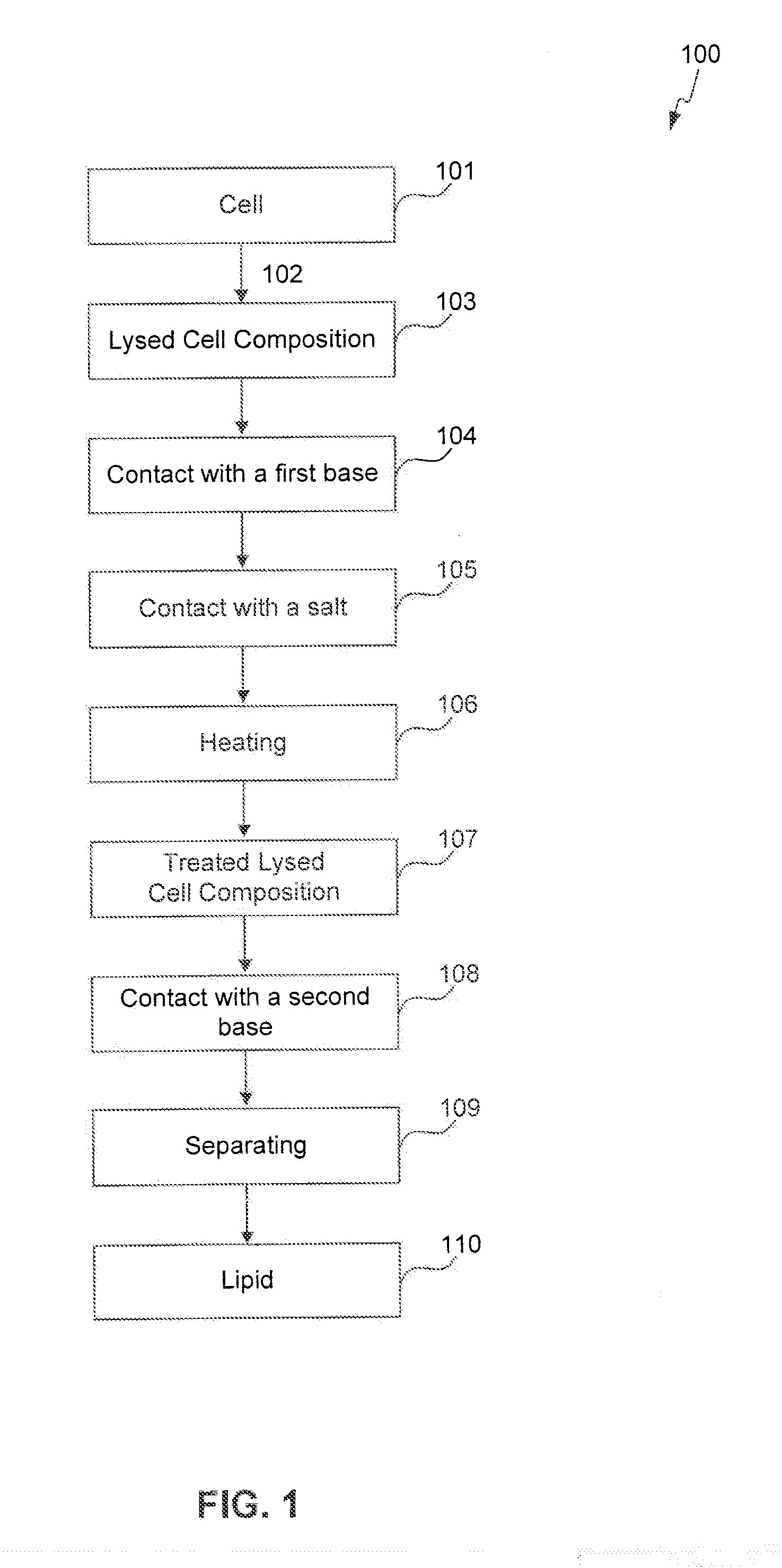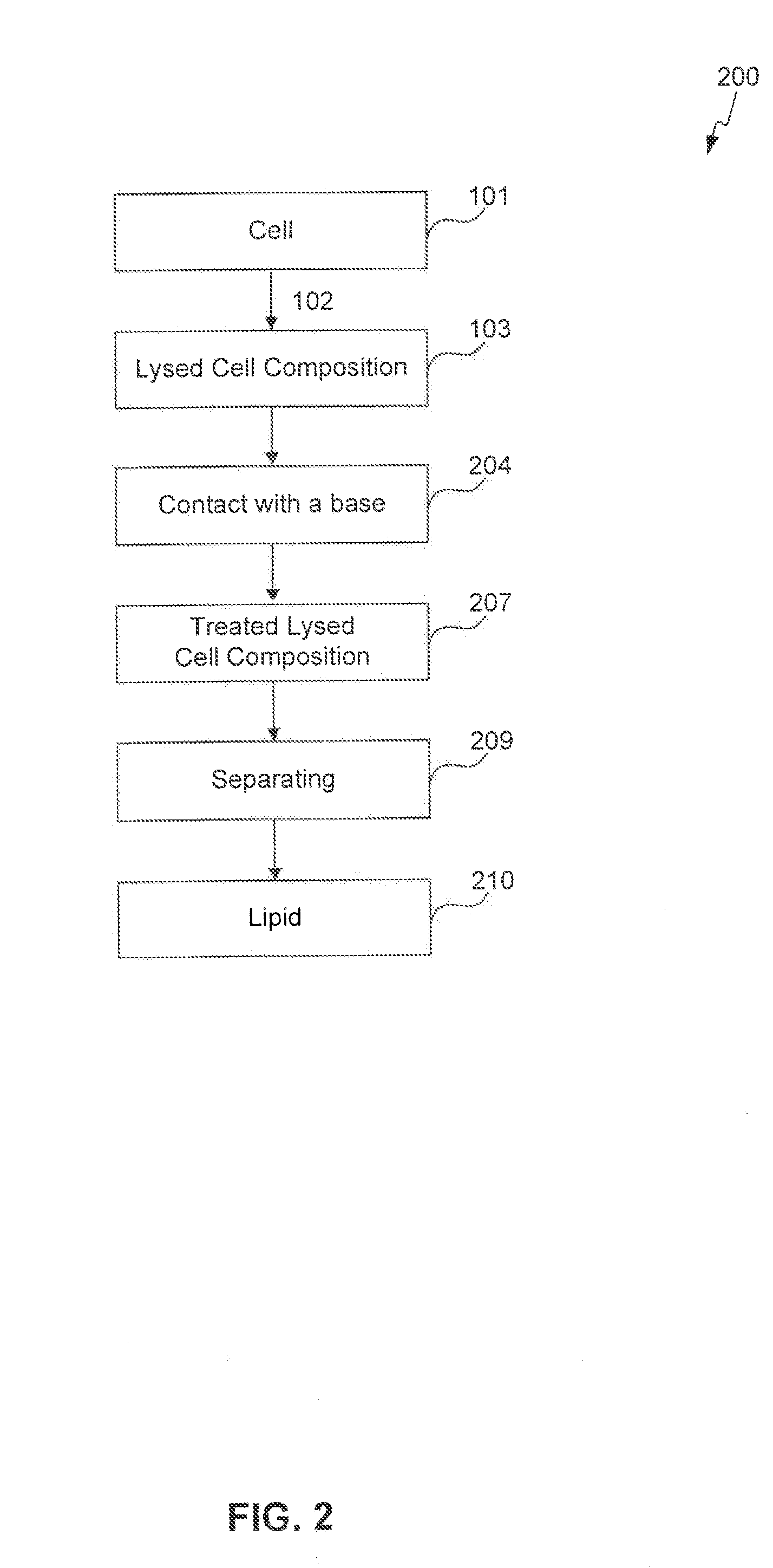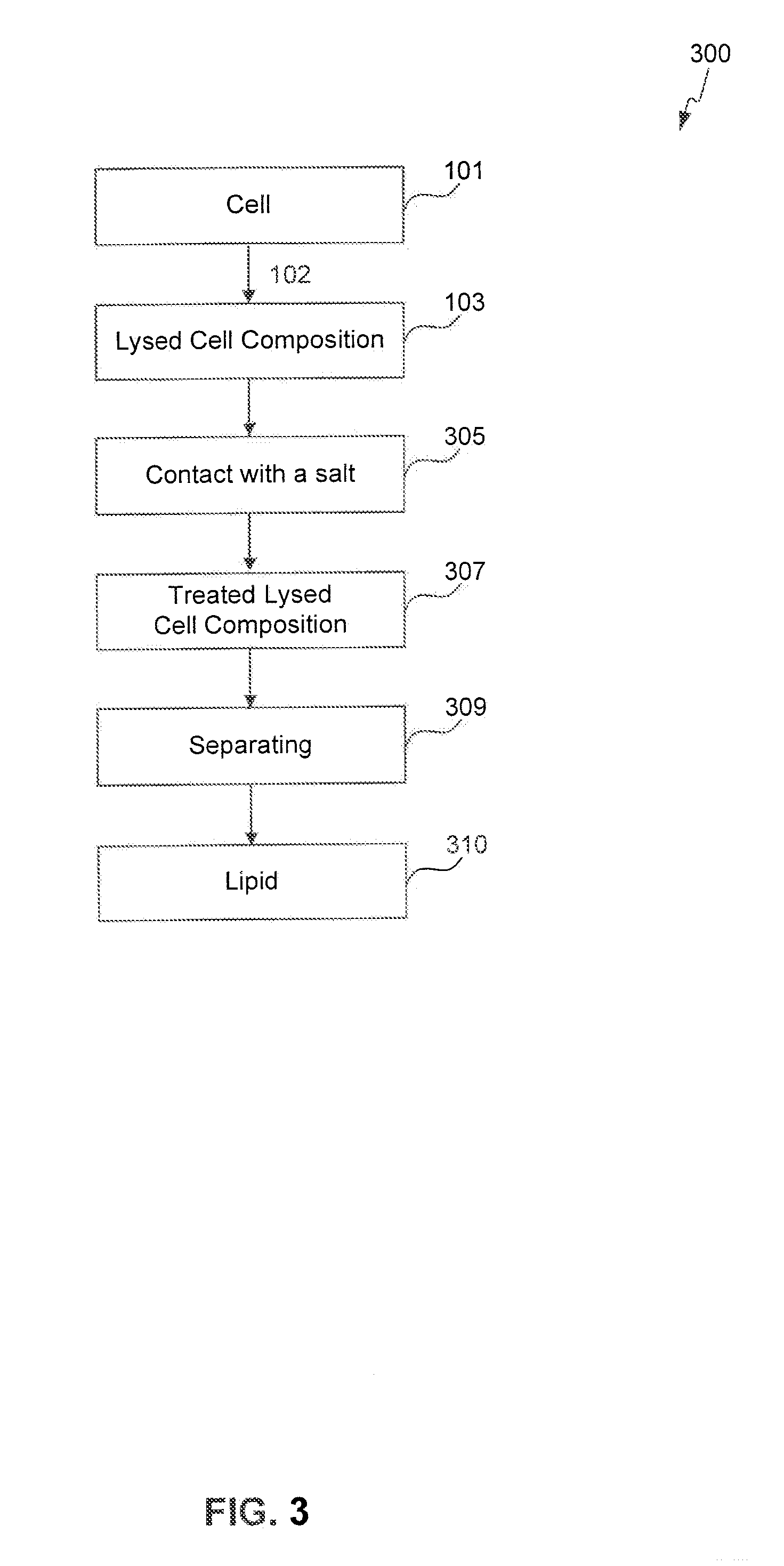Extraction of Lipid From Cells and Products Therefrom
a technology of lipids and cells, applied in the direction of fatty oil/fat separation, fatty oil/acid recovery from waste, fatty-oil/fat refining, etc., can solve the problems of increasing the overall production cost of lipid extraction, and reducing the efficiency of lipid extraction
- Summary
- Abstract
- Description
- Claims
- Application Information
AI Technical Summary
Benefits of technology
Problems solved by technology
Method used
Image
Examples
example 1
[0219]A cell broth (20,000 kg) containing microbial cells (Schizochytrium) was heated to 60° C. Enzymes (i.e., Alcalase 2.4 L FG 0.5%) were added to the cell biomass to lyse the cells and form an emulsified lysed cell composition. The emulsified lysed cell composition was first treated with a first base (NaOH, 250 kg of 50% w / w solution) until the pH of the lysed cell composition was from 10.4 to 10.6. Next, a salt (solid NaCl, in an amount of 2%, by weight, of the lysed cell composition) was added to the lysed cell composition. The lysed cell composition was then heated to a temperature of 85° C. to 102° C. and held at that temperature level for 24 hours to 70 hours. A second base (NaOH, 50% w / w solution, 40 kg) was then added to the lysed cell composition until the pH was above 8. The lysed cell composition was then centrifuged to separate the lysed cell composition into three phases: a top phase containing a lipid layer, a middle phase containing an emulsion layer, and a bottom p...
example 2
[0220]A cell broth (500 g) containing microbial cells (Crypthecodinium cohnii) was concentrated from approximately 7% biomass to 13.5% biomass, by weight of the broth. The broth was homogenized at a pressure of 10,000 psi (2 passes) to form a lysed cell composition. The lysed cell composition was treated with a base (i.e., NaOH, 10 g of a 50% w / w solution) until the pH of the lysed cell composition was 10.4 to 10.6. A salt (solid NaCl, in an amount of 2% by weight of the lysed cell composition) was added to the lysed cell composition. The lysed cell composition was then heated to a temperature of 85° C. to 92° C. and held at that temperature range for 15 minutes to 2 hours. The lysed cell composition was then centrifuged at a temperature of 70° C. to 90° C. using a Bench Top Sigma 6K15 Centrifuge (SIGMA Laborzentrifugen GmbH, Germany), operating at 5,400 rpm to separate the lysed cell composition into three phases: an upper phase containing a lipid, a middle phase containing an emul...
example 3
[0221]A cell broth (20,000 kg) containing microbial cells (Schizochytrium) was heated to 60° C. Enzymes (i.e., Alcalase 2.4 L FG 0.5%) were added to the cell biomass to lyse the cells and form a lysed cell composition. Next, a salt (solid Na2SO4, 2,000 kg, or 10%, by weight, of the lysed cell composition) was added to the lysed cell composition. The lysed cell composition was then agitated for 24 hours to 48 hours at room temperature. The lysed cell composition was then centrifuged at 40° C. to 75° C. using a Westfalia RSE110 Centrifuge (Westfalia Separator Industry GmbH, Germany), operating at 6,000 rpm at a feed rate of 40 kg / min to separate a lipid from the lysed cell composition. The centrifuging provided three phases: an upper phase containing a lipid, a middle phase containing an emulsion, and a bottom phase containing a solid / liquid emulsion. The total time to centrifuge the entire 20,000 kg batch was approximately 8 to 9 hrs. The lipid layer was separated from the centrifuge...
PUM
| Property | Measurement | Unit |
|---|---|---|
| speed | aaaaa | aaaaa |
| temperature | aaaaa | aaaaa |
| temperature | aaaaa | aaaaa |
Abstract
Description
Claims
Application Information
 Login to View More
Login to View More - R&D
- Intellectual Property
- Life Sciences
- Materials
- Tech Scout
- Unparalleled Data Quality
- Higher Quality Content
- 60% Fewer Hallucinations
Browse by: Latest US Patents, China's latest patents, Technical Efficacy Thesaurus, Application Domain, Technology Topic, Popular Technical Reports.
© 2025 PatSnap. All rights reserved.Legal|Privacy policy|Modern Slavery Act Transparency Statement|Sitemap|About US| Contact US: help@patsnap.com



